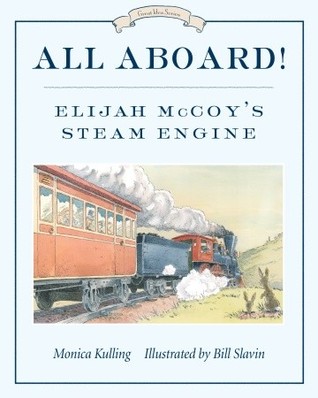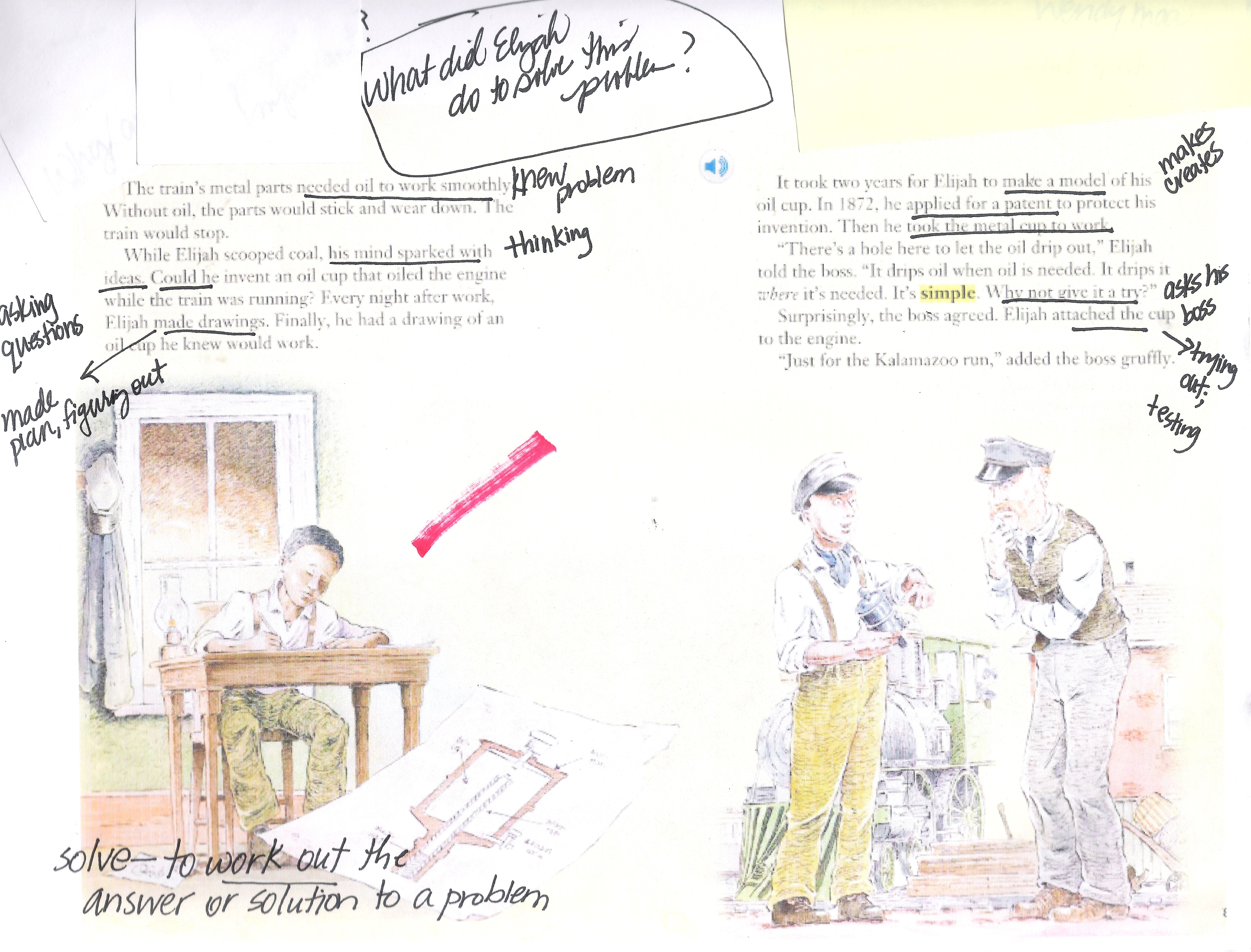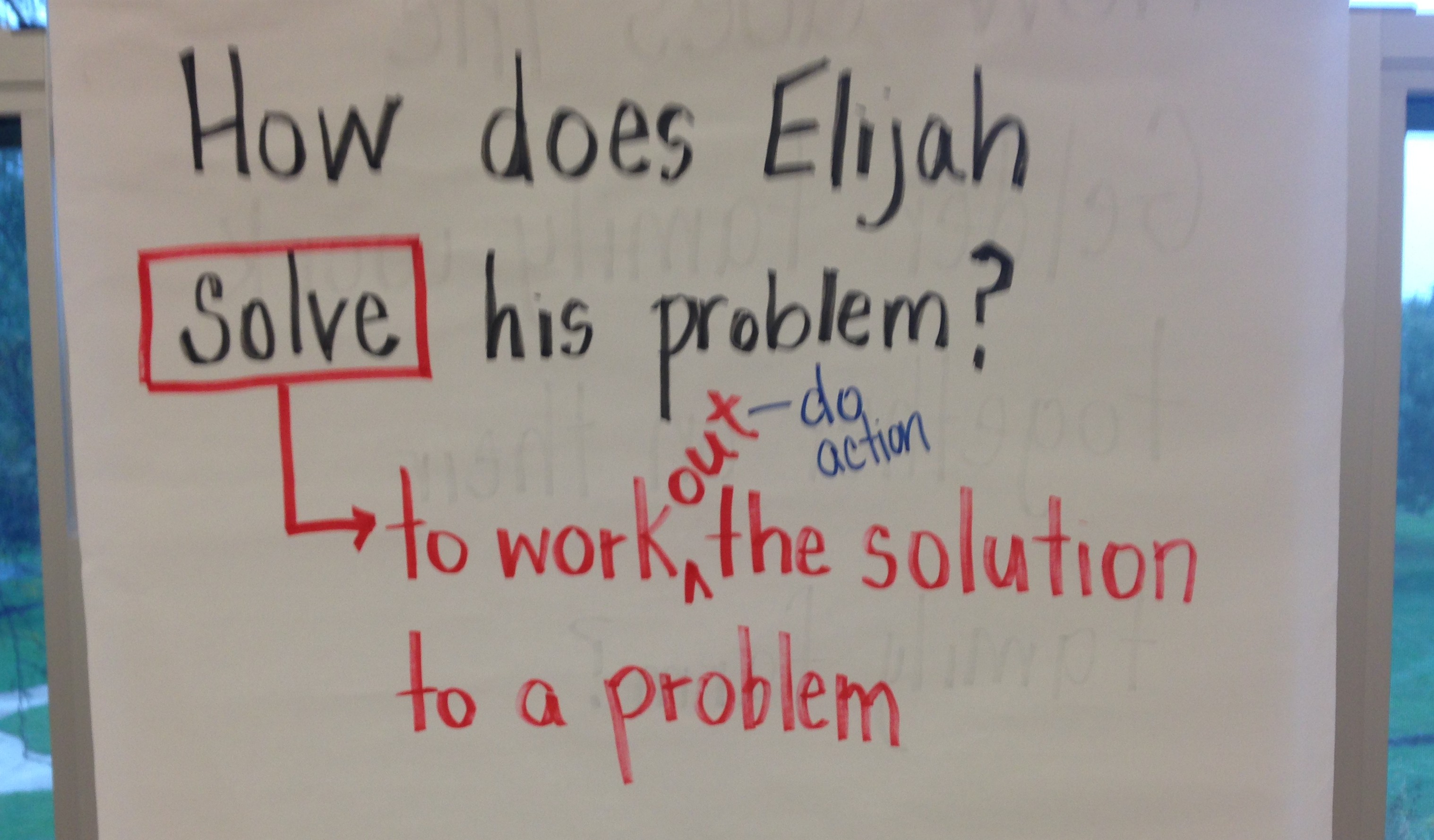
All Aboard! Elijah McCoy’s Steam Engine by Monica Kulling (2013)
Recently I had the pleasure of teaching demonstration lessons in several third grade classes. In one class, the students were immersed in a unit of study with the essential question “How can learning help us grow?” The text for the lesson was All Aboard! Elijah McCoy’s Steam Engine from the Wonders curriculum; this story is also available as a paperback on Amazon.
In this district, Wonders is a source for the teachers, but they are not mandated to follow the teacher’s (essentially scripted) guide; instead they are encouraged to use it consistently as a resource for concepts and strategies to teach and texts to use. While many of the texts included in this basal system are decent or even pretty good, the Wonders approach to “close reading” is too broad for me. The directions for this text (and others) were to engage in a close reading of the whole story. This is too long a text for close reading when we want students to read and reread a text. Also he essential question that is posed for close reading of this text – “How can problem solving lead to new ideas?” — is actually quite difficult. When you look for the answer to this question in the teacher’s guide, the guide states –
How can problem solving lead to new ideas? Explain that problem solving leads to new ideas and that the solution, or answer, to the problem might be an invention.
The authors of Wonders have not answered the question here.
And yet, Wonders as a source has a lot of potential here – with this text in this unit of study with a focus on “How can learning help us grow?” The third grade teacher and I decided to rewrite the question for close reading and choose a short excerpt from the text for close reading. We thought it would be pretty easy for the students to identify Elijah’s problem – oiling the engine was dangerous and a constant hassle. Instead we read through this biographical narrative, thinking about where the problem solving happened or was described by the author. We identified two pages (my study notes are below) that revealed how Elijah solved the problem–he developed a metal cup that would serve to oil the train’s engine. Just within two pages of text, there were many difficult ideas–his mind sparked with ideas, he made a model, he applied for a patent. A close reading of this excerpt seemed rigorous and yet appropriate for this whole class lesson.

Before the lesson, the teacher read aloud the whole story to the students (early in the day) and they discussed the text in general. For the lesson, I posted the question “How does Elijah solve his problem?” with the definition of solve in a different color marker. (I didn’t want to take for granted that the students would have a solid understanding of what “solve” means.) The blue printed words “do action” were added during the lesson. This question supports the larger unit question of “How can learning help us grow?” In other words, by answering this question, in a later lesson, the teacher can pose the question, “So how did what Elijah learned help him grow as a person?” The posted question was our purpose for reading and drove our decisions about what words to underline and what annotations to write–I referred to it continuously throughout the lesson. It’s like a lifeline for some readers–providing focus and direction.

The text was projected for all students to view – using the document camera and each student had a copy of these two pages. (That’s a flaw in the Wonders curriculum – students are not asked to annotate the text. This is easy to fix!!!!) During the lesson, I gradually released. We started out thinking about the question as we read, annotating together – I annotated on the text on the document camera and they annotated on their copy of the text. Then I released responsibility–giving them the reins to read and annotate, with the question “How does Elijah solve his problem?” in mind. I moved around and conferred with individuals and small groups. Some students needed a lot of support. Others were ready to fly. At the end I asked the students to write an answer to the question on a sticky note–a manageable amount of writing in just a few minutes. Our assessment of their responses afterwards revealed that every learner–striving and flying–was able to access the text and gained something from this lesson. Some of the students wrote responses with a conceptually easier idea — Elijah made a model; while others grappled with the idea of applying for a patent (which the teacher had discussed during the read aloud).
This teacher also meets with small guided reading groups–which is critical. The whole group lesson lasted about 25 minutes. For students who needed more support, she could easily return to this text in small groups (if it’s an appropriate instructional level). This lesson with the whole group establishes identity as a community of readers–that all of us can make meaning with a grade level text. Not every comprehension lesson should be whole group like this – maybe 25 minutes a day. The students still need guided reading and independent reading and so forth.
Okay…hope this helps.
S
